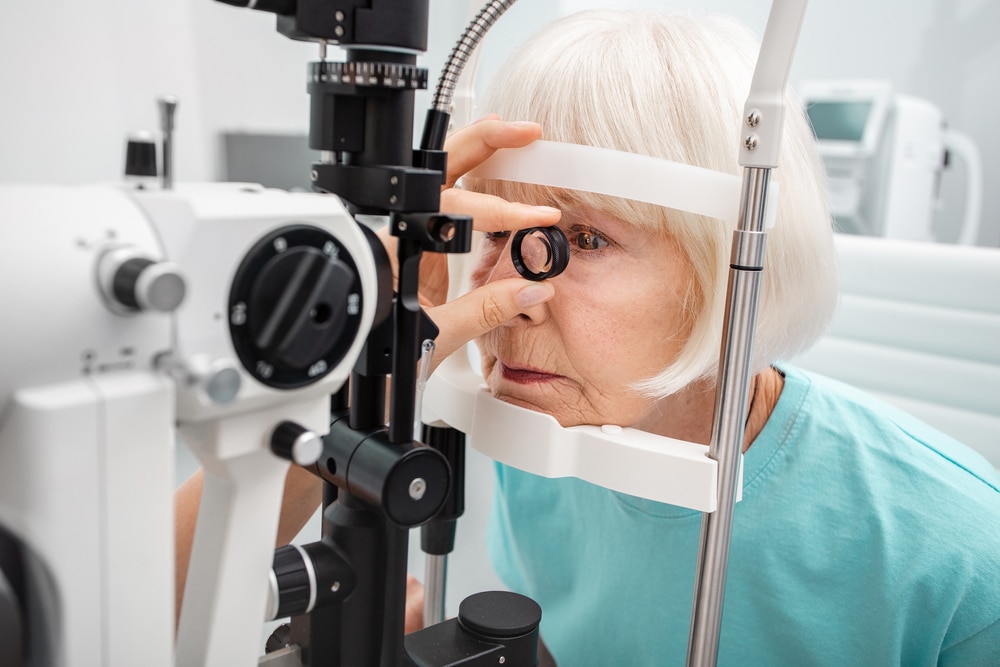Glaucoma
Glaucoma is a common eye condition that can lead to progressive vision loss if left untreated. At Medical Center Ophthalmology Associates in San Antonio, Texas, our eye doctors have the knowledge and experience to treat glaucoma and preserve vision.
What is Glaucoma?
Glaucoma is a group of eye conditions that cause damage to the optic nerve at the back of the eye. The optic nerve is a part of the eye that transmits information gathered by the light-sensitive retina to the brain.
Once this information reaches the brain, it is able to convert this information and produce an image. Due to this specific process, the optic nerve is extremely vital for the production of clear vision.
In those with glaucoma, optic nerve damage is often caused by abnormally high eye pressure. Damage to the optic nerve due to consistently high eye pressure usually results in changes to peripheral vision.
There are many different types of glaucoma, and they all need to be closely followed by an experienced eye doctor to prevent vision loss.


Are There Different Types of Glaucoma?
Although there are many types of glaucoma, some of the most common types of glaucoma are open-angle glaucoma, narrow-angle glaucoma, angle-closure glaucoma, and low-tension glaucoma.
Intraocular eye pressure levels require a unique and consistent balance. Your eyes are constantly creating fluid to provide nourishment and support its structure.
In order to maintain a healthy eye pressure level, the fluid must also leave the eye at a consistent rate. Depending on which type of glaucoma you have, either there is an overproduction of fluid or not enough fluid is leaving your eye.
The most common type of glaucoma is open-angle glaucoma. All types of glaucoma require treatment in order to preserve vision.
How Do Eye Doctors Test for Glaucoma?
Your eye doctor can test for glaucoma during your annual comprehensive eye exam. If you are experiencing symptoms of glaucoma or if you have a strong family history, your eye doctor may perform additional testing.
The most common test that eye doctors perform to detect glaucoma is tonometry. Tonometry is a test to measure intraocular pressure, also known as eye pressure.
Since abnormally elevated eye pressure is a sign of glaucoma, this is a test you can expect to receive at every eye doctor’s appointment. Your eye doctor also does a thorough examination of your retina and optic nerve, which can show signs of glaucoma if it is present, during every comprehensive eye exam.
If further testing is necessary, your eye doctor may take a detailed image of the back of your eye, known as an OCT or optical coherence tomography. Since glaucoma often affects peripheral vision, they may also ask you to perform a visual field test.
A visual field test maps out any spots in your vision that may be weak or abnormal. With all these tests combined, and your eye doctor’s thorough examination of your eyes and vision, they will be able to determine if you have glaucoma or not.
If you are diagnosed with glaucoma, these tests will help your eye doctor determine how aggressive they will need to be with treatment. Next, they will develop a treatment plan to lower eye pressure and prevent further vision loss.

What Are the Symptoms of Glaucoma?
Glaucoma is often referred to as the “silent thief of sight” since most types of glaucoma do not present any apparent symptoms. You may not even know you have glaucoma until the condition has advanced enough to cause a significant decrease in vision.
A less common type of glaucoma, known as acute angle-closure glaucoma, can cause relatively severe symptoms and rapid vision loss. If you experience eye pain or aching above your brow, in addition to nausea, headaches, blurred vision, or halos around lights, visit your emergency room right away.
The best way to prevent vision loss from glaucoma and to determine if you are at risk for developing the condition is to visit your eye doctor in San Antonio, TX, for routine exams.
How Do Eye Doctors Treat Glaucoma?
At Medical Center Ophthalmology Associates, we offer a variety of glaucoma treatment options tailored to each patient, including a variety of eye drops and other technology. Your eye doctor will discuss all available options with you at your appointment.
All glaucoma treatment aims to lower eye pressure and preserve vision. At Medical Center Ophthalmology Associates, some of the glaucoma treatment options offered are:

MIGS
MIGS or microinvasive glaucoma surgery is a group of procedures that your eye doctor can perform in order to treat glaucoma. Since MIGS procedures are considered minimally invasive, they are often easier to recover from and cause less damage to the surrounding tissues of the eye.
At Medical Center Ophthalmology Associates, our glaucoma specialist offers a variety of MIGS procedures, depending on each person’s need, including the iStent, Ahmed Valves, and the Trab system.
Trabeculectomy
Trabeculectomy is a procedure where your eye doctor removes a portion of the drainage system in your eye where there are often blockages. This procedure opens up a new pathway for the fluid to exit the eye.
Once it goes through this new passageway, it is able to be reabsorbed by the tissues surrounding the eye.
Tube Shunt
Another glaucoma procedure that aims to lower eye pressure by creating an alternate channel for fluid to exit the eye is a tube shunt. During this procedure, your eye doctor will insert a very small tube into the natural drainage system in your eye.
Once in place, the tube will aid in fluid drainage and lower the eye pressure. You will not be able to feel the tube, which is usually not visible.
CPC Diode Laser
Diode cyclophotocoagulation, or CPC, is an outpatient procedure that aims to reduce the production of fluid inside the eye in those with glaucoma. During this procedure, your eye doctor will use the CPC laser to reduce the creation of fluid in the secretory epithelium of the ciliary body.
The CPC Diode laser procedure is often relatively quick, lasting less than twenty to thirty minutes.
Next Steps
Your eye doctor will determine the best treatment plan for you, depending on your type and severity of glaucoma. The best way to prevent vision loss from glaucoma is to visit your eye doctor for routine eye exams.
Ensure you visit your eye doctor urgently if you notice any common glaucoma symptoms.
Do you want to learn more about glaucoma? Schedule an appointment at Medical Center Ophthalmology Associates in San Antonio, TX, today!






